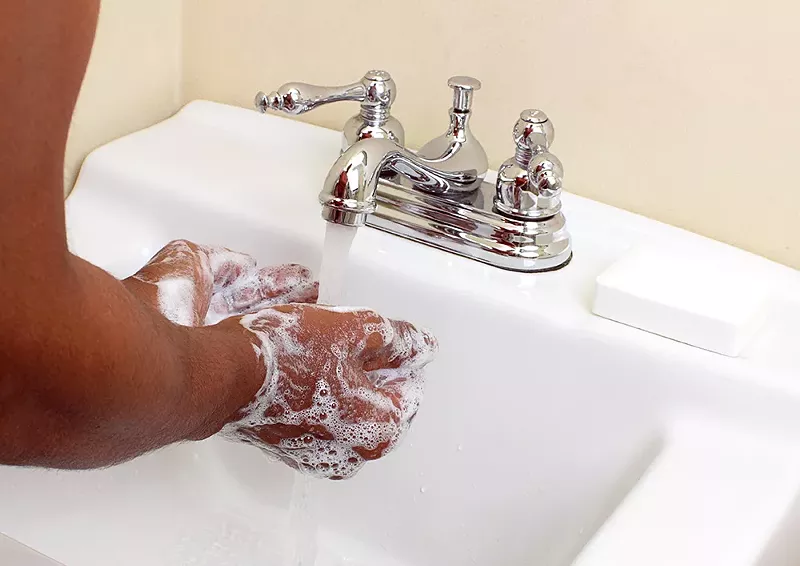The general answer to the second line of the header is: Worse than the rest of us.
How could it not? Lower income people are generally likely to have worse levels of health and less physical resilience. That's true outside of America as well as inside it.
And, it ties to the first question.
North Dakota dirt farmers and non-incorporated cow-calf ranchers, among others, represent rural poverty. But, because the novel coronavirus doesn't have an R0, or virulence rate, that much higher than the common flu, from what we know, rural America in general isn't a big vector for COVID's spread.
The overall question was posed by a Twitter friend after seeing coronavirus cases spiking in metro Detroit. Per the story, it's not surprising that NOLA is second on the list.
So, we're looking for metropolitan areas, likely more densely populated ones, where it can spread more readily. Along with that, we're looking for two other things.
One would be absolute poverty rates.
The other, IMO, would be Gini coefficient rating.
Why on that?
My thought is that with a bigger Gini coefficient, you're more likely to have rich (and middle class) have different social interactions than poor and lower middle class, other than direct interactions with each other.
Example? Higher Gini plus higher overall poverty? Means more white collar downtown office workers directly face more homeless people, and those close to it. By close to it, that would be people not homeless in either a narrow or broader sense, but living at the margins, and often doing so in overcrowded living conditions. These people might work at poorer downtown bodegas, crammed-in C-stores, food trucks, etc.
Looking beyond these things above?
States or metro areas that, like northern Italy, tilt elderly and also meet all the above issues are likely to be problematic, too.
So, let's take a look.
I couldn't easily find Gini or absolute poverty by metro area, but Wiki has state-level information for both Gini coefficients and absolute poverty rate.
If you're in the lowest 20, the lowest two-fifths, on both, that's probably not good. (Well, it's not good in general, of course, beyond the current situation.)
States that hit that?
Florida
New York
Arizona
Arkansas
North Carolina
Georgia
Kentucky
West Virginia
Louisiana
New Mexico
Mississippi
So, potential problems there. Let's narrow a bit more to No. 34 or lower, the lowest one-third.
Not much improvement. Only Arizona, Arkansas and West Virginia drop out; New Mexico is at No. 34 on Gini, so I'll scratch it too.
So, more problematic states?
Florida
New York
North Carolina
Georgia
Kentucky
Louisiana
Mississippi.
Now, let's pull in population density, at least at the state level. And let's split this in half.
More densely populated is worse.
New York is fairly rural way upstate, but even outside of New York City, it's not that rural along the Hudson and the old Erie Canal. Florida is as densely populated as New York State as a whole. Georgia, North Carolina and Louisiana are also in the top half.
Given that Louisiana is in the bottom 10 on poverty and Gini, and the Crescent City never fully recovered from Katrina? I suspect it will get worse before it gets better. The rest of the state might not be too bad, but I wouldn't want to be in NOLA for some time.
Wiki also has all US incorporated burgs with more than 10K people per square mile. Hialeah and other Miami burbs are on the list. New York City is 70 percent more densely populated than Hong Kong, giving the lie, to some degree, to people talking about an Asian miracle on coronavirus. (Also note that Hong Kong, under the thumb of Beijing, could be lying or fudging.)
Florida has the additional twist of the number and percentage of senior citizens there. It's far and away the oldest state on the lists above. It's not as old as Italy, but it is almost as old as Spain, per world rankings.
Many of these Florida seniors are richer, rich enough to have retired from somewhere else in the U.S., and thus likely to be more healthy than the average senior citizen. Nonetheless, they're dependent on lower-income people for services, to some degree more than non-seniors are.
This isn't perfect, as some metro areas cross state boundaries, for example. New Jersey overall has a high Gini, mainly because of the southern half of the state vs. New Jersey's portion of New York metro, but also Camden and other Philly burbs.

No comments:
Post a Comment
Your comments are appreciated, as is at least a modicum of politeness.
Comments are moderated, so yours may not appear immediately.
Due to various forms of spamming, comments with professional websites, not your personal website or blog, may be rejected.